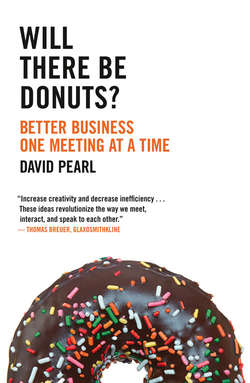Читать книгу Will there be Donuts?: Start a business revolution one meeting at a time - David Pearl - Страница 35
We nearly meet because … technology* makes it so easy
ОглавлениеIt’s 10.58 on the bustling concourse of a London train station. Suddenly a granny throws down her walking stick and starts jiving. All over the station people join her. They dance in concentration and in silence, perfectly synchronized by the music they hear on their iPod headphones. Exactly two minutes 11 seconds later the dance stops as magically as it started and the participants melt away.
The Flash Mob that has just happened is a great illustration of how technology helps us nearly meet. None of this would have been possible without the internet. The participants convened online, practiced their dance at home via web cams, texted each other where and when to meet. Everything has been prepared and performed at arm’s length. That’s its beauty and irony. It’s less entertainment and more a shared personal experience for those in the know. A silent dance, an un-performance by non-performers. A crowd of people dancing alone is so very 21st-century. And a perfect illustration of how technology loves us to nearly meet.
I really admire people who have embraced the nearly meeting medium with creative flair. People like Eric Whiteacre who have created amazing online choirs, or StreetWars, who galvanize whole towns into staging water pistol ambushes through social media.
That said, I am doubtful about whether all this supposed digital connectivity has actually brought us closer as human beings.
I met a London cabbie the other day. He was a chatty guy but was looking subdued. “Just had a lady in my cab and asked her, ‘How are you today?’ She gave me a filthy look and shouted, ‘I am married, you know,’ as though fending off an attack.” Apparently this is happening to him once a week. A most basic human exchange is taken as a threat of violence.
America, the most netted-up nation on earth, is increasingly the land of the loner. In his book Bowling Alone, Harvard professor Robert Putnam shows how Americans have become increasingly disconnected. Family dinners have apparently dropped by 43 percent in 25 years; people are 35 percent less likely to have friends over to their houses; and bowling alleys across the country are increasingly used by individuals competing against themselves.
Thanks to Twitter, Facebook, and LinkedIn we are accruing vast numbers of “friends” we’ll never meet. In many cases live meeting is actively discouraged. Even my eight-year-old son knows not to show his face on screen and to use a coded name when talking to his mates in Seattle or Brazil about the latest Lego craze.
It’s all very flattering to have a huge network, but drain the digital bath of drive-by acquaintances and people trying to sell you something, and how many real relationships do you find?
The other day someone I haven’t seen for 20 years—and barely knew back then—waved to me at a concert and wished me Happy Birthday. How the hell did she know? Apparently my Wall told her. Walls don’t just have ears any more. They have mouths. I didn’t feel flattered. I felt stalked.
Clearly there is a dissonance between the media we have available to connect with others and our success in using them.
Nowhere does technology facilitate nearly meeting better than our busy, busy businesses. Co-workers email each other rather than look around the computer screen and talk. Meeting tables come ready plumbed for laptops, so face time and screen time inevitably compete.
I am looking forward to the time when someone recommends the face-to-face meeting as a wild new innovation. I suspect it’s not far away. Especially when people are making such a fuss about new technologies which are—drum roll—in 3D. Our lives are in 3D, if only you’d rip your eyes away from your 2D screen long enough to notice that!
I’m struck by how we are using all sorts of very tactile, kinetic verbs—ping, prod, tweet, twang—to describe interactions that are totally disembodied. How funny that we talk about using technology to stay in touch when there’s no touching at all. OK, I give my Apple the occasional loving stroke, but …
If I am sounding Luddite, I don’t mean to. Technology enables businesses to cut down on the time and cost involved in physically bringing their people together. And let’s not forget, this is also in the interests of the planet, minimizing the carbon carnage of those unnecessary international flights.
But virtual meetings are—as their name plainly advertises—not real. They encourage us to almost, just about, nearly meet. It’s a real challenge to make and keep real human connection with disembodied voices or truncated torsos across continents and time zones. We’ll look later in the book at how to make the best of the medium and “create intimacy at a distance.”
Bottom line: just because technology can connect us, it doesn’t mean we do really connect.
A colleague told me a poignant story about a friend of his, a top-flight corporate lawyer who spends her time jetting around the world, constantly in touch with clients on one of her two BlackBerries by text, BMS, email, and MMS. Recently, on a fevered dash from one meeting to another, she flipped her car and was nearly killed. Staggering out of the wreckage and just glad to be alive, she reached for her phone to tell her loved ones that she was all right and realized she had no one to call.
The ability to really connect is natural, but requires practice or it withers, with predictably negative effects on both our business and personal lives.
